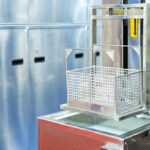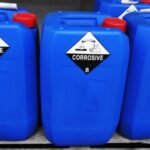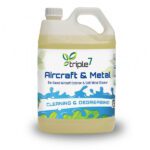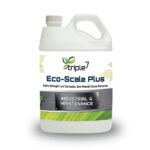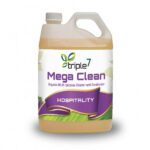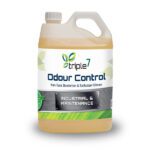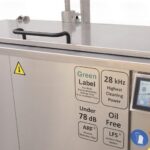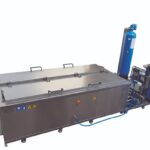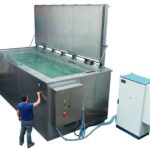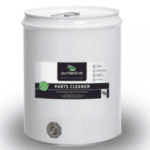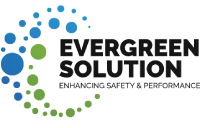Table of Contents
Introduction
In the industrial world, keeping heat exchangers clean isn’t just a routine task—it’s essential for keeping operations smooth and cost-effective. The challenge, however, lies in balancing the costs of this critical maintenance with the need to ensure peak performance. Cleaning chemicals, descaling systems, and the overall process can be expensive, but with the right strategies, it’s possible to reduce these costs without compromising efficiency.
Let’s dive into some practical do’s and don’ts that can help your organization save money while maintaining or even improving the efficiency of your heat exchanger cleaning process.
Why Efficient Heat Exchanger Cleaning Matters
Before we get into the nitty-gritty, it’s important to understand why this topic is so vital:
Operational Efficiency: Clean heat exchangers work at their best, meaning they transfer heat efficiently and use less energy.
Equipment Longevity: Regular cleaning prevents the buildup of scale and deposits, which can corrode and damage your equipment over time.
Cost Savings: Efficient cleaning means less frequent maintenance, fewer unexpected breakdowns, and lower energy bills, all of which add up to significant savings.
With these benefits in mind, here’s how you can make your cleaning processes more cost-effective while still getting top-notch results.
Do’s for Cutting Costs and Boosting Efficiency
Do Keep an Eye on Your Heat Exchangers’ Condition
Think of regular inspections as health check-ups for your equipment. By routinely checking the condition of your heat exchangers, you can catch issues like scaling or fouling early on, before they escalate into bigger, more expensive problems. This proactive approach allows you to plan and schedule cleanings at just the right time—avoiding costly emergency maintenance or premature wear and tear.
Do Choose the Right Cleaning Chemicals for Copper Tubes
Copper tubes are popular in heat exchangers because of their excellent thermal conductivity, but they’re also prone to scaling. Picking the right copper tube cleaning chemical is crucial for keeping them clean and efficient without breaking the bank.
- Compatibility: Make sure the chemical works well with copper and any other materials in your heat exchanger to avoid corrosion or damage.
- Effectiveness: Look for a chemical that gets the job done with minimal use—this will keep costs down.
- Safety: Opt for environmentally friendly, non-toxic chemicals. They’re better for the planet and can reduce disposal costs and health risks for your workers.
Do Use an Effective Industrial Descaler
Industrial descalers are powerful tools in your cleaning arsenal. When used correctly, they can significantly enhance your cleaning efficiency and reduce overall costs. To get the most out of your descaler:
- Follow Guidelines: Stick to the manufacturer’s instructions on concentration, application time, and temperature for optimal results.
- Monitor pH Levels: Regularly check the pH during descaling to maintain effectiveness and protect your equipment.
- Recycle and Reuse: Whenever possible, recycle the descaling solution to reduce both chemical consumption and disposal costs.
Do Optimize Your Descaling System
A well-optimized descaling system is key to cost-effective heat exchanger cleaning. Tailor your system to meet your operation’s specific needs, considering factors like the type of fouling, materials used in the heat exchanger, and available chemicals. To optimize:
- Customize Your Setup: Work with experts to design a system that matches your heat exchangers’ needs, ensuring maximum efficiency.
- Automate Where You Can: Automation can improve consistency, reduce labor costs, and minimize the risk of human error.
- Maintain Your System: Regular maintenance is crucial to prevent costly breakdowns and extend the life of your equipment.
Do Train Your Staff
Training your staff is an investment that pays off in spades. Well-trained employees can carry out cleaning procedures more efficiently, use chemicals correctly, and spot potential problems before they become major issues. Training should include:
- Safe Chemical Handling: Proper handling, storage, and disposal of cleaning chemicals are vital to prevent accidents and reduce waste.
- System Operation: Ensure operators understand how the descaling system works and how to troubleshoot common issues.
- Compliance: Keep your team up-to-date on environmental and safety regulations to avoid penalties and ensure a safe workplace.
Don’ts for Cutting Costs and Boosting Efficiency
Don’t Skimp on Chemical Selection
Choosing the wrong cleaning chemicals can be a costly mistake. Avoid these pitfalls:
- Using Harsh Chemicals: They might clean quickly, but they can also damage your equipment, leading to expensive repairs or replacements.
- Ignoring Compatibility: Ensure the chemical is compatible with your heat exchanger materials, or you risk ineffective cleaning and long-term damage.
- Overusing Chemicals: Using too much can increase costs and harm the environment.
Don’t Neglect Preventive Maintenance
Preventive maintenance is one of the most effective ways to keep costs down while ensuring efficient cleaning. Neglecting it can lead to:
- Unplanned Downtime: Without regular maintenance, equipment failures can lead to costly production halts.
- Higher Energy Bills: Dirty heat exchangers use more energy, driving up operational costs.
- Shortened Equipment Life: Lack of maintenance accelerates wear and tear, leading to expensive replacements.
Don’t Rely Solely on Manual Cleaning
While manual cleaning has its place, relying on it exclusively can be inefficient and costly. The downsides include:
- Higher Labor Costs: Manual cleaning is labor-intensive, increasing costs.
- Inconsistent Results: Manual methods may not clean all areas thoroughly, reducing overall efficiency.
- Risk of Damage: Improper techniques can damage your equipment, leading to expensive repairs.
Don’t Ignore the Environmental Impact
Cost-cutting should never come at the expense of the environment. Ignoring this can lead to:
- Regulatory Penalties: Non-compliance with environmental laws can result in hefty fines.
- Reputation Damage: Companies that neglect environmental responsibility risk losing customer trust.
- Long-Term Costs: Environmental damage can lead to costly remediation efforts and increased regulatory scrutiny.
To avoid these issues:
- Use Eco-Friendly Chemicals: Choose biodegradable, non-toxic options.
- Dispose of Chemicals Properly: Follow environmental regulations to avoid penalties and protect the environment.
- Implement Sustainability Initiatives: Reduce waste, conserve resources, and promote eco-friendly practices.
Don’t Underestimate the Power of Data and Monitoring
In today’s data-driven world, monitoring your cleaning processes is crucial for cost reduction and efficiency. Failing to use data can lead to:
- Missed Opportunities: Without data, it’s harder to spot inefficiencies.
- Inaccurate Cost Assessments: Lack of data can lead to misjudging where savings can be made.
- Suboptimal Cleaning: Data helps determine when cleaning is necessary, avoiding unnecessary costs.
To leverage data effectively:
- Monitor Performance: Use sensors and monitoring tools to track real-time performance.
- Analyze Data: Regularly review data to identify trends and opportunities for improvement.
- Continuous Improvement: Use insights to optimize processes and reduce costs over time.
Conclusion
Balancing cost reduction with efficiency in heat exchanger cleaning is a challenging but achievable goal. By following the do’s and don’ts outlined here, you can ensure your cleaning processes are both cost-effective and highly efficient. Key strategies include selecting the right cleaning chemicals, optimizing descaling systems, and investing in preventive maintenance and staff training.


